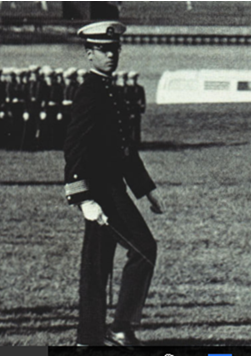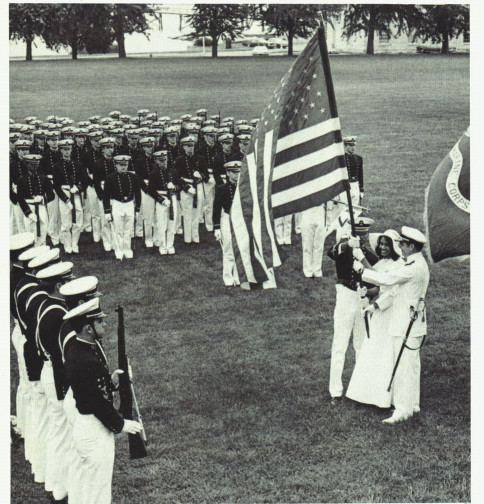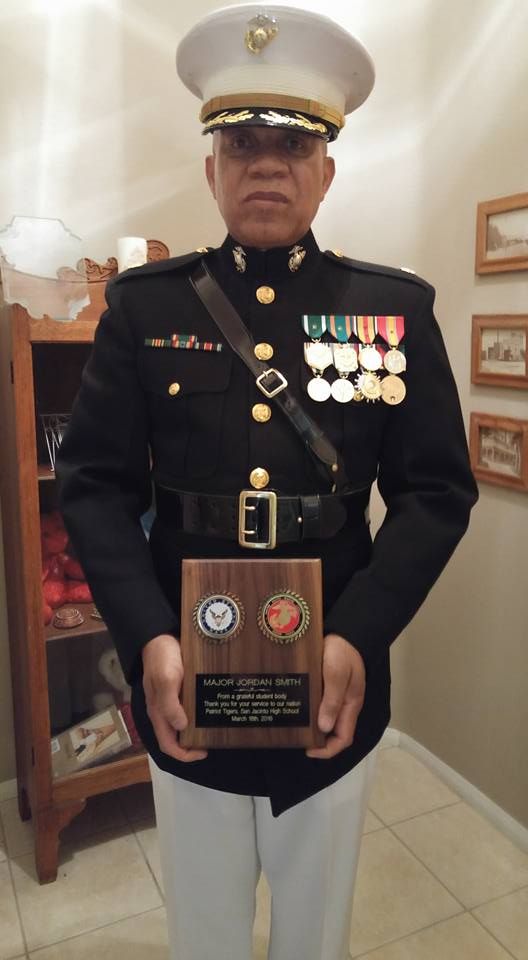|
Extract from All Hands Magazine September 1976, page 29-30 written by Dayle Malkie
“It was a typical Naval Academy dress parade 4300 midshipmen marched in precision in the Annapolis Spring weather. But the man who gave the "pass in review" order wasn't usual. Mason C. (Chuck) Reddix, was the first black Brigade Commander, (the number one ranking midshipman), in the Naval Academy's 131-year history. Just as important was the fact that.400 other minority midshipmen, 200 of them black, in all classes and at all ranks were scattered throughout the rest of the brigade. It was quite a change from the situation just six years ago when 23 blacks were midshipmen at Annapolis" (Malkie, 1976). "The single most important factor in the rapid increase in the number of minority midshipmen has been the intensive recruiting efforts to spur the interest of young men, and now women, in black, Chicano, oriental and other minority communities. The academy began minority recruiting in 1970 when it assigned a black officer to be the advisor for minority affairs in the Academy's Candidate Guidance Office. A Mexican-American officer later joined the staff. The minority advisors traveled around the country talking to high school students about opportunities at the Naval Academy, but they made a special effort in areas with large groups of minority students. The minority advisors also worked with high school principals and counselors, contacted' minority organizations and professional groups and appeared, as well, on local radio and television program” (Malkie, 1976). “Since the push to recruit minority midshipmen started in 1970, the number of black midshipmen, alone, has increased almost tenfold. Fifty minority men, 38 of them black, graduated in June with the class of '76. "And they're quality students," said Lieutenant Commander George Gaines, a black officer who in June wound up his three-year tour of duty as the Academy's Advisor for Minority Affairs. "The Academy's tough entrance requirements have not been lowered to boost the numbers of minorities. The minority midshipmen here could easily have gone to any other college or university." The class of '76 bears out Gaines' statement. Not only did they produce the first black brigade commander in Chuck Reddix, but also they saw one of their classmates, Jordan B. Smith of St. Louis, Mo., become the first black color company commander. Smith then chose the Naval Academy's first black color girl, Stephanie McManus, to present the colors Along with the increase in the number of minority midshipmen have come different feelings about the Academy by the minority students. Black midshipmen who graduated in 1970 and '71 admitted that it was occasionally difficult to be one of only 20 or 30 blacks in a brigade of 4300 men" (Malkie, 1976). "But I've noticed a definite change since I was a plebe," said Smith. "I think it was harder on the blacks then, but when the Navy began to change its policies on minorities, things seemed to change here" (Malkie, 1976) . In doing research for the book, I was shocked to find so many quotes and statements taken from members of the press. I remember the paparazzi following me everywhere during June Week in 1976. I couldn’t wait to get home in Saint Louis only to have my father get the Post-Dispatch to write yet another article. Reference Markie, D. (1976). Blacks at the Academy. All Hands Magazine. Retrieved from http://www.navy.mil/ah_online/archpdf/ah197609.pdf
0 Comments
Your comment will be posted after it is approved.
Leave a Reply. |
Dr. Jordan B smith jr.I attended the U. S. Naval Academy from 1972-1976 earning a B.S. in Mathematics. Served 20 years both active and reserve in the US Marines. Veteran of the Desert Shield/Storm. I earned a MAED and Ed D. specializing in curriculum and instruction from the University of Phoenix in 2015. I graduated from CBC High School in Clayton, MO in 1972. Archives
May 2024
Categories
All
|



 RSS Feed
RSS Feed